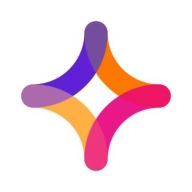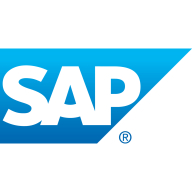

Jitterbit Harmony and SAP Cloud Platform are key players in the iPaaS market. Jitterbit Harmony holds an advantage for budget-conscious businesses due to its cost-effectiveness, while SAP Cloud Platform appeals to enterprises seeking comprehensive integration solutions.
Features: Jitterbit Harmony shines with pre-built connectors, a simplified integration process, and user-friendly interface tools. SAP Cloud Platform provides extensive cloud services, scalability, and a wide range of enterprise tools for comprehensive integration experiences.
Room for Improvement: Jitterbit Harmony could enhance its scalability options, develop more advanced data transformation capabilities, and offer deeper integration functionalities. SAP Cloud Platform might focus on improving ease of use, enhancing its interface for better user experience, and expanding its pre-built connector offerings.
Ease of Deployment and Customer Service: Jitterbit Harmony offers an easy deployment process requiring minimal technical expertise, accompanied by responsive customer service. SAP Cloud Platform, while requiring complex setup due to its extensive features, provides robust support and consultation for high adaptability.
Pricing and ROI: Jitterbit Harmony is recognized for its affordability and rapid ROI, making it appealing to budget-restricted businesses. SAP Cloud Platform involves higher upfront costs but offers matching ROI for enterprises needing its extensive scalability and integration capabilities.
Top management buy-in is crucial, and conducting an ROI analysis is essential before adoption to ensure the investment aligns with value.
In the last three to four years, whatever we have invested, we have received two to three times back from our investment.
Orders are managed online, integrated with S/4HANA, reducing chances of fraud or communication errors in processes like purchase orders and sales.
I rate the technical support as ten out of ten because there is often a need for continuous technical support.
The availability of knowledgeable support to the implementation partners and the customers could be better.
Regarding support, whenever we are creating a ticket for any problem, we want the solution immediately at the earliest.
SAP Cloud Platform is most suitable for various business needs, allowing easy expansion.
On a scale of one to ten, I'd rate its scalability at nine and a half to ten.
Earlier, we had individual applications, but now everything is migrated to SAP, and it's all on a single platform, making it easier for management to make timely decisions.
If the databases are accurately managed, the solutions and processes are performed quickly and efficiently.
SAP Cloud Platform is pretty stable, although there are occasional rare glitches.
In 2024, we will have migrated to S/4HANA through RISE with SAP.
Allowing more third-party applications to be integrated into the cloud platform would make it easier for customers to adopt SAP Cloud Platform.
SAP Cloud Platform should improve on integrating third-party applications with S/4HANA.
Whatever we want to purchase, it is in lakhs of rupees or crores only.
The cost for SAP Cloud Platform is high as the server is expensive.
SAP is competitive compared to other enterprise solutions like Oracle, though not necessarily cheap.
The main benefits of the SAP Cloud Platform for us are that earlier we had the primary data center at our place, but now we have shifted to the cloud.
The most proficient feature of SAP Cloud Platform is integration for data services linked with Fiori apps.
It converts CapEx into OPEX due to its SaaS model.
| Product | Market Share (%) |
|---|---|
| SAP Cloud Platform | 5.7% |
| Jitterbit Harmony | 2.4% |
| Other | 91.9% |


| Company Size | Count |
|---|---|
| Small Business | 8 |
| Midsize Enterprise | 3 |
| Large Enterprise | 1 |
| Company Size | Count |
|---|---|
| Small Business | 15 |
| Midsize Enterprise | 7 |
| Large Enterprise | 25 |
Jitterbit Harmony offers an advanced integration platform that simplifies data transformation, helps users quickly connect apps, and automates workflows, streamlining complex business processes efficiently.
Designed to meet the high demands of modern businesses, Jitterbit Harmony enables seamless integration across cloud and on-premise environments. By leveraging its powerful tools and user-friendly design, users can accelerate innovation, reduce operational costs, and enhance productivity. It bridges the gap between traditional and emerging technologies, ensuring organizations can adapt quickly to market changes and remain competitive.
What are the key features of Jitterbit Harmony?Jitterbit Harmony finds its application across numerous industries, from enhancing data integration in the healthcare sector to optimizing supply chain logistics in manufacturing. It supports financial institutions by improving transaction processing and facilitates real-time data connectivity in retail environments, making it a versatile choice for diverse industries looking to innovate rapidly.
SAP Cloud Platform is an integration platform as a service (iPaaS) and PaaS cloud tool. It powers applications that deliver real-time insights to contribute to more effective and timely decision-making. Customers all over the world from different-sized companies use SAP Cloud Platform to build application extensions, integrate landscapes, or extend existing enterprise applications in the cloud.
The platform incorporates innovative technologies, including big data, Internet of Things (IoT), artificial intelligence (AI), and machine learning (ML). SAP Cloud Platform supports native services and products by SAP, as well as partners with popular platforms such as Microsoft Azure, Google Cloud Platform, Amazon AWS, and Alibaba Cloud.
Users of the product can extend, integrate, and develop applications on premises and in the cloud. The product offers flexibility, agility, and scalability, as it enables easy integration and connection of different applications within the platform. The solution is based on open standards and provides a wide range of development tools.
SAP has announced that they are removing SAP Cloud Platform as a brand name and moving its capabilities within SAP Business Technology Platform (SAP BTP). The features of SAP Cloud Platform will be integrated into SAP BTP to assist with data management and analytics, alongside other components of the platform. Existing customers of SAP Cloud Platform will continue to benefit from its products under SAP Integration Suite and SAP Extension Suite.
SAP Cloud Platform Capabilities
The solution offers a wide variety of tools, application capabilities, services, and application programming interface (API). These can be categorized in the following ways:
SAP Cloud Platform Benefits
The platform has many benefits which improve their client’s workflows. They include the following:
Reviews from Real Users
Shylaraj AK, a senior architect at a construction company, describes SAP Cloud Platform as easy to maintain, great features, and helpful support, which attributes to his high rating for the product.
Ehab-El H., chief executive officer at Asis, likes SAP Cloud Platform because it is easy to use with a fast deployment and straightforward setup.
We monitor all Integration Platform as a Service (iPaaS) reviews to prevent fraudulent reviews and keep review quality high. We do not post reviews by company employees or direct competitors. We validate each review for authenticity via cross-reference with LinkedIn, and personal follow-up with the reviewer when necessary.